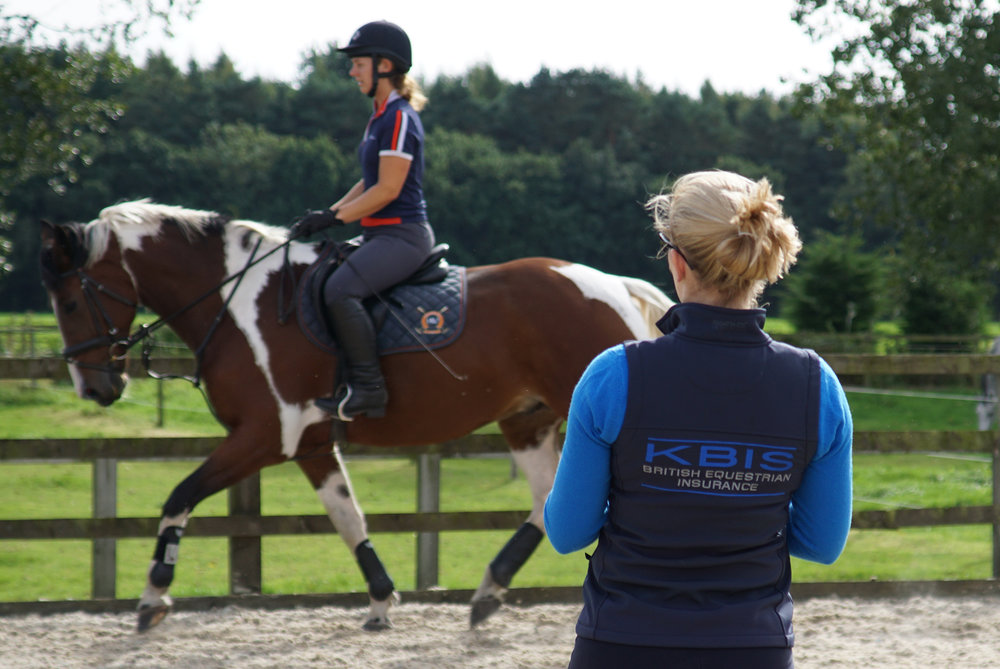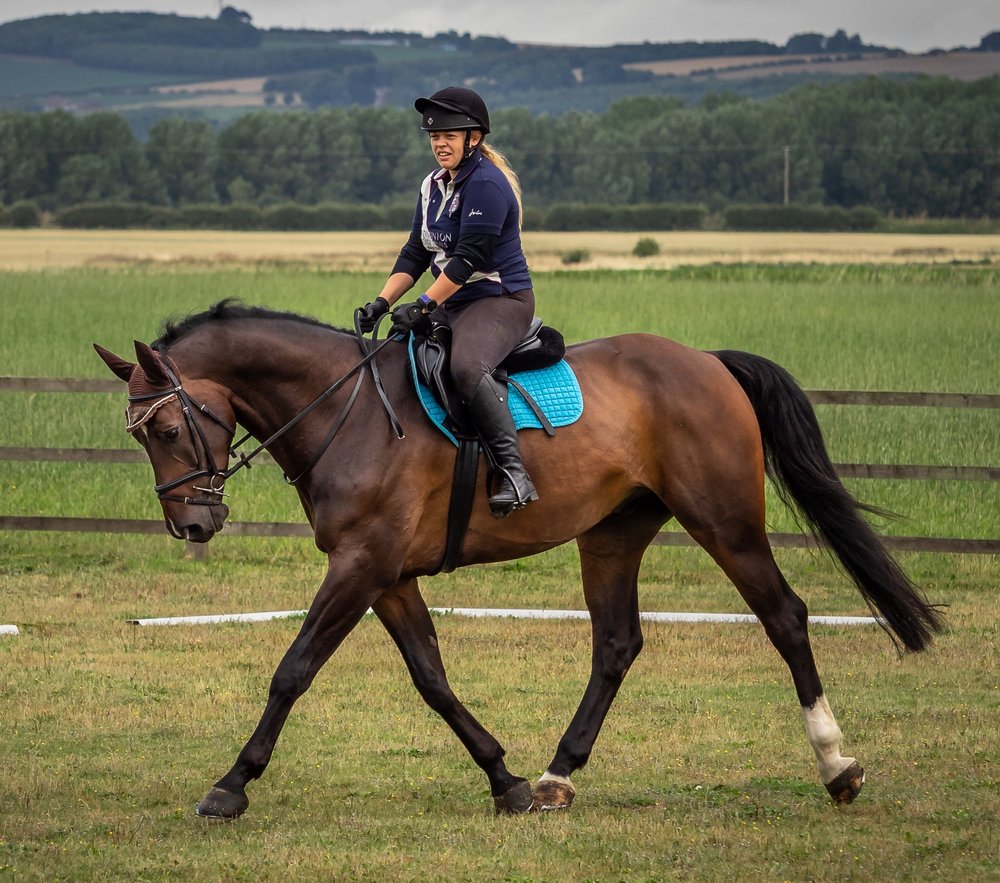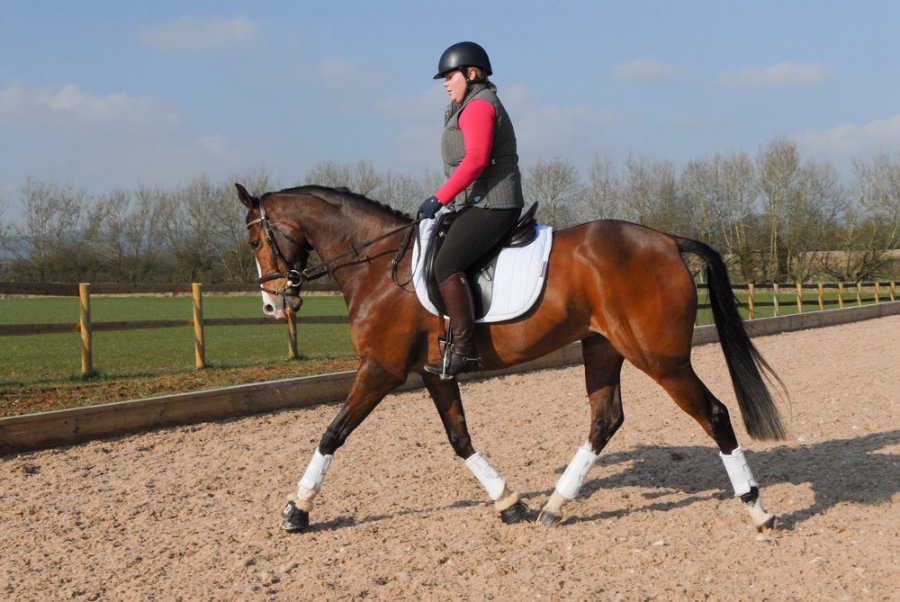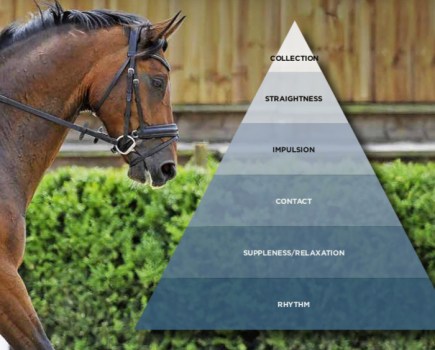Do you often find yourself looking blankly at your trainer when they ask you to perform a half-halt, or maybe you feel like you need an interpreter to understand the comments from the judge on your dressage test sheet?
The terminology used in the horse world can at times sound like a completely different language – but don’t worry, there’s an expert on hand to help clear up any confusion.
Trainer and event rider Harriet Morris Baumber has put together a handy guide to some of more commonly used phrases to help you have a clearer understanding of what they mean.
Half-halt
The Half-halt is basically when you give your horse an aid to slow down a fraction but not stop completely – ideally without losing any power or activity.
Think of it more like a ‘whoaa’ than a ‘stop’.
Through
This is when your horse has unlocked his mind and body and is free of tension or resistance. This allows the energy to flow from his engine (hindlegs) through his body into the connection at the front.
Imagine a hosepipe with no kinks or knots – the water will flow seamlessly ‘through’ from the tap to the end.
Falling In or Falling Out
Falling in or out is when your horse fails to stay in the middle of an imaginary corridor.
If he’s falling out your horse might feel like there’s a magnet pulling him to the outside edge of the corridor.
He’ll feel like he’s being sucked into the inside edge of the corridor if he’s falling in.
Soft
This is a term used to describe your horse when he feels pliable and manoeuvrable. It can be used in relation to various parts of the body, for example, ‘soft in the hand’ – means the horse is not rigid or resistant in the feel he’s giving to your hands and down the reins.
Soft in the neck means your horse has a floppier, bendy neck that can easily be manoeuvred or positioned by the rider.
Behind or In front of the Leg
If your horse is described as ‘behind the leg’, there is a delay between the rider’s leg aids and the horse’s reaction and he responds in his own time.
When he is in front of the leg he responds almost instantly when the rider uses the leg aid.
Ahead or Behind the Vertical
 Being ahead of the vertical is how you would describe a racehorse crossing the finishing line – his nose is the first thing to cross the line, therefore well ahead of the vertical.
Being ahead of the vertical is how you would describe a racehorse crossing the finishing line – his nose is the first thing to cross the line, therefore well ahead of the vertical.
If he’s behind the vertical your horse’s nose will be tucked in and is positioned closer to his chest.
Against the Hand
This is when the horse resists a rider’s hands and is refusing to accept the contact.
On the Forehand
 The forehand is made up of your horse’s head, neck, shoulders, withers and forelegs. The term on the forehand means your horse is travelling along with his weight over this area.
The forehand is made up of your horse’s head, neck, shoulders, withers and forelegs. The term on the forehand means your horse is travelling along with his weight over this area.
This can give the appearance of a ship sinking down, nose first into the water.
To find out more call Harriet visit
www.harriet-morris-baumber.co.uk
Don’t miss the latest issue of Your Horse Magazine, jam-packed with training and veterinary advice, horse-care tips and the latest equestrian products available on shop shelves, on sale now.







